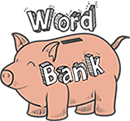You are here
Progression of Skills - Equality and Inequality

Progression of Skills Related to this Toolkit
Below we explain the skill(s) that would come before this lesson and the skill(s) that would come after the student has mastered the content of this lesson.

Why is this important?
Solving for an unknown variable is the foundation of high school mathematics and science. In STEM fields we are constantly solving for an unknown variable (for example, looking for the velocity of an object as it flies through the air, or the volume of a soup can). There are times when an unknown variable has only one solution and there are times when it may have a lot of solutions.
Before

During

After
Before this lesson:
Students should be fluent in performing mathematical operations (addition, subtraction, multiplication, division) and in solving equations without variables (a variable is a letter and not a fixed number). For example, if a student can complete this What’s My Number activity with little to no help and with ease, they are ready for this toolkit lesson. If a student finds this challenging, you can continue to the next step by offering extra, guided support.
Students Do:
Students determine how many tickets were sold to someone if they know the total number of tickets sold and how many tickets they still have to sell.
This Toolkit Lesson:
The lesson focuses on solving one-variable equations and inequalities to get a solution to a problem or a set of possible solutions to a problem. This lesson also focuses on students understanding the connection to number line graphs and a solution to an inequality.
Students Do:
A student can buy 10 volleyballs and add in the shipping cost to get the total cost for the items.
After this lesson:
Students should practice translating written problems into algebraic sentences.
Students Do:
A student can sell chocolate cakes for $12 each and figure out how many cakes to sell to make at least $70.



Connect With Us





